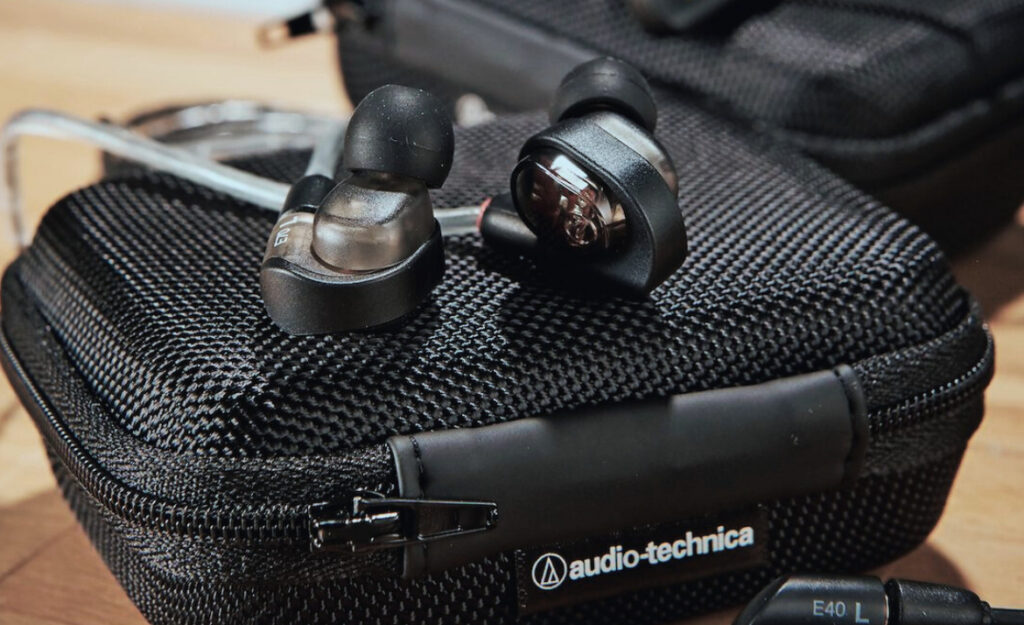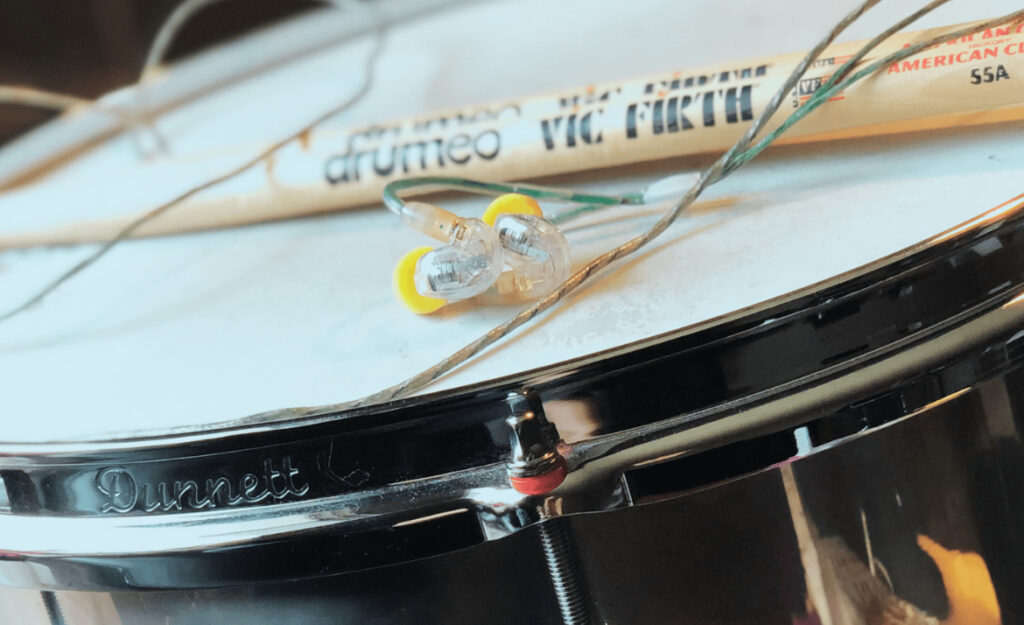Picture this: you’re behind your drum kit, locked into a groove, totally absorbed in the set. Suddenly, you realize wireless in ear monitors have allowed you to move, perform, and interact like never before—all without missing a beat.
For drummers, the ability to stay connected to the band’s sound mix while enjoying mobility is a game-changer. Stage wedges used to be the norm, but technology has evolved, and wireless in ear monitors are now a drumming essential.
This guide explores exactly how wireless in ear monitors transform your live drumming experience, offering practical steps, tips, and scenarios for reaching new heights of comfort, clarity, and performance. Let’s get right into the details.

Choosing Reliable Wireless In-Ear Monitors That Won’t Let You Down
Picking wireless in ear monitors that deliver consistent sound and minimal dropouts is every drummer’s priority. Starting with a well-built system makes all the difference in your stage confidence and comfort.
Stability rules the day when you’re drumming live. Signal loss breaks concentration and musical flow, so investing in a solid, stage-proven wireless system is a non-negotiable step.
Signal Integrity Keeps Your Drum Grooves Locked In
A clear RF path is the backbone of good wireless in ear monitors. Some drummers say, “If I can’t trust my signal not to fade, I can’t focus on my timing.” That’s why placement and antenna position matter so much before every show.
Check your transmitter placement: put it up high and away from metal objects. Monitor wireless channels before soundcheck. If you hear hiss or cut-out while moving, scan for a cleaner frequency and lock it in.
Like topping off gas before a road trip, checking signal quality prevents performance stalls. Experienced drummers know the best sound starts with uninterrupted reception—so they test everything twice before stepping onto the stage.
Battery Life Management for Long Sets and Festivals
Drummers running wireless in ear monitors wisely build battery checks into their pre-show routine. Telling a bandmate, “Give me five to swap batteries,” is smart—not paranoid. Extended sets demand it.
Double-checking charge levels before a set means zero signal loss mid-song. Use fresh batteries or fully charged packs every time you gear up for a show longer than 40 minutes. Keep spares taped to your rig or inside a bag pocket.
Like a pit crew before a race, organized drummers refresh power sources without question. One quick swap brings peace of mind, so they play all night without worry.
Comparing Entry-Level and Professional Systems
Entry-level wireless in ear monitors usually offer fewer frequency choices and simpler displays. Pro drummers ask for systems with wide tunable ranges to avoid event interference—and that’s critical at packed gigs or festivals.
Professional models handle high SPL and bass response without distortion. If you play heavy music, test-drive models with extended low-end or reinforced earbuds. Clarity for a double-pedal run is worth the investment for any serious drummer.
Spending a bit more can get you rechargeable batteries, customizable molds, and greater range. Match your selection to your gig needs and future ambitions—it’s a lasting upgrade to your rig.
| System Name | Frequency Options | Battery Type | What To Do Next |
|---|---|---|---|
| Entry Wireless Kit | Limited (4-6 channels) | AA batteries | Use for rehearsals and smaller gigs |
| Midrange Performer | Up to 16 channels | Rechargeable pack | Good for weekend gigs and small venues |
| Pro Touring Model | 32+ channels | Rechargeable or AA | Perfect for festivals, large clubs, and tours |
| Custom-Molded System | Varies (pro-level) | Rechargeable | Best for those ready to invest in ultimate fit and isolation |
| Wireless Headphone Adapter | 1-4 channels | USB charge | Works in practice spaces—upgrade if you plan to gig regularly |
Solving Drum Mix Problems Quickly and Efficiently Onstage
When you control your monitor mix, you can adjust your hearing and stay in sync without missing a note. Smart troubleshooting means you feel confident in any venue or setting.
Instead of waiting on the sound tech, drummers can take charge of their own audio, making clear decisions and adjustments during line check or the set itself whenever necessary.

Cymbal Microphone Placement: How to Cut Unwanted Bleed
Learn to position, angle, and choose mics for less bleed and better isolation. Achieve clarity in your recordings right away.Cutting Through Stage Noise with Proper Isolation
Using the right ear tips or custom molds can seal out cymbal wash and crowd chatter. If your bandmate says, “The kick’s buried again,” swap tips immediately. A tight fit means a clearer, safer mix.
- Test several ear tip sizes before committing to one. Secure seals improve isolation and listening comfort during long practices or high-volume shows—reducing ear fatigue dramatically.
- Carry both foam and silicone tips in your stick bag. Choosing foam for high-decibel venues and silicone for comfort lets you adapt to every room’s vibe without struggling with sound clarity.
- Adjust the mix level between backing tracks and click. If the click track is too quiet, raise it just enough to keep time but not enough to mask your snare.
- Request a dedicated drum mic if sharing channels. Tell the sound engineer, “I need my toms to punch through more,” and fine-tune at your wireless receiver for instant results.
- Re-calibrate volume before each show. Listen for even balance at both soft and loud passages—ear fatigue creeps in fast if your monitors are too hot from the start.
When every drum cut through just right, it’s easier to lock into pocket and interact with your band. Try this routine at rehearsal, and tweak details night by night for best results.
Practical Steps for a Flawless Click Track Integration
Integrating your click is never about volume alone. Start by panning your click to one side and main mix to the other, letting your brain distinguish the cues automatically inside your wireless in ear monitors.
- Ask for more of your own snare in the mix—it works as a real-world anchor, letting you hear physical hits over the internal click, keeping your feel natural.
- Mark your wireless pack’s volume knob with tape. A finger swipe during a song can dial you back in if the click or guide track fades, preventing panic during complex setlists.
- Practice singing cues at low click volumes before the gig. If “Chorus!” sounds distant, rehearse until confident—this prevents rushing or lagging at big moments.
- Treat the click like a train conductor; it drives, but you steer. Always let your feel and groove lead, using the click as guide rather than master.
- Log set-by-set mix tweaks in a rehearsal journal. Noting “less kick, more hi-hat” after every soundcheck helps you show up prepared and minimize surprises at every show.
Reliable click integration means smoother transitions and fewer resets on stage. Make these steps part of your warm-up, and you’ll hear instant improvements show by show.
Building a Wireless Drum Monitoring Setup Your Way
Customizing your drum monitoring chain saves time between gigs and helps you feel at home no matter the stage. Consistency lets you focus on music, not troubleshooting.
Start with a checklist: wireless in ear monitors, personal mixer, fresh batteries, molded earbuds, cabling, tape, and backup ear tips. Prepping gear in advance saves stress when changeovers are tight.
Optimizing Stage Placement for Interference-Free Performance
Arriving early to check your transmitter’s location avoids unexpected cutouts. Position wireless gear on risers or taped tables—never draped over drums or amps—so signal paths stay clean.
Ask, “Can I test my walk-around range?” before soundcheck ends. Walk the stage, pack in pocket, sticks in hand. Adjust positioning until you get zero dropouts while moving.
Observe antenna angles. Keep them parallel and upright to maintain a continuous RF link. A sideways antenna buried in your stick bag spells lost signals and missed cues every time.
Scenes Where Pre-programmed Mixes Save Stress
Programming scene presets for small clubs, outdoor fests, or jazz gigs means you’re ready as soon as the band counts off. Load different mixes for each type of show into your digital mixer or wireless pack memory.
If a bandmate calls, “This venue sounds different!” just tap your preset and recall the right mix. No scrambling for levels in front of a waiting audience, and no guesswork in real time.
Just like switching shoes for the right gig, scene management makes every set feel familiar and comfortable. Invest time programming your device, and watch pre-show chaos disappear.
Nailing Comfort and Hearing Protection with Drum-Specific Monitors
Ensuring your ears stay protected and fatigue-free is critical for every drummer. Drum-oriented wireless in ear monitors offer comfort alongside hearing safety, allowing you to perform intensely and accurately all night.
Proper fit stops distractions. Test moldable or custom-fitted earbuds that stay in during wild fills or sweaty encore breaks—no more popping out and scrambling mid-song. Try both for a few sets to decide.
Block Out Stage Noise While Staying Aware of the Band
Choose dual or triple-driver earbuds designed for drumming environments. These models reproduce the punch of toms and the sizzle of hats, so you play full-out without pushing volume dangerously high in your wireless in ear monitors.
Smoothly seal out crowd noise while ensuring you can hear cues from your bandmates. If you spot the bassist nodding for a fill, you’ll react instantly without needing to crank your monitors above safe levels.
Analogies work here: comfortable molds anchor your focus like running shoes fit athletes. Proper fit and drivers create a supportive ‘safety zone’ that lets you perform at your best night after night.
Prevent Ear Fatigue During Fast, Loud Sets
Monitor your listening habits. If those last few songs feel harsh, it’s a red flag. Set internal monitor compressors to limit peaks and prevent long-term hearing issues while using wireless in ear monitors during longer sets.
Remind yourself, “Volume up isn’t better.” Take quick listening breaks backstage. Even pros step off the riser, pull one ear out, shake off pressure, and return recharged for the next hit.
Keep a decibel meter or app handy. If monitor levels exceed safe ranges, reset before the next show—hearing health tomorrow is worth the few minutes today.
Tweaking Tone and Dynamics to Fit Your Drumming Style
Adapting your wireless in ear monitors to suit various genres and playing techniques leads to more natural, musical performances. Each style demands unique EQ and mix tweaks to ensure your sound sits perfectly in the band context.
Experiment with EQ on your wireless pack. Boost punch around 80Hz for kick-focused rock, or accentuate snare attack for funk. Document tweaks and adjust them for each performance to maintain sonic consistency.
Personal Mix Templates for Different Gigs
Set up templates for “big room,” “small club,” and “festival” with differing EQ and mix levels. Label each clearly so you can recall the exact settings needed at set-up, saving precious time during quick changeovers.
Add ambient mics to your mix so crowd noise or acoustic cues stay audible. Adjust levels after the first song, checking feedback from bandmates on clarity and blend.
Involve your sound engineer in mix reviews after each show. Ask for feedback: “Did my drums feel tight or was anything washed out?” Tweak for better cohesion—and more connected playing—show to show.
Scene: Drummers Using Wireless In-Ear Monitors for Improv Sets
Imagine a jazz drummer cuing off subtle bass or piano phrasing through wireless in ear monitors. They stay dynamically connected, underscoring solos, and supporting changes—all night, with zero guesswork.
At a fusion gig, wireless monitoring reveals every nuance in cymbal phrasing and ghost notes, inspiring creative fills. Drummers report, “I can finally express myself without masking vital frequencies.” Every solo breathes easier when monitors are tailored just right.
The key: update your personal mix template to fit group improvisation and always rehearse new sounds at band practice—then review what worked after the gig.
Using Wireless In-Ear Monitors for Click Tracks, Backing Tracks, and More
Broadening your wireless in ear monitors setup to include click tracks and backing tracks brings studio-level precision to live shows. Drummers benefit from reliable cues and keep tight with complex arrangements or songs with pre-recorded elements.
Set up your mixer to split click to one ear and monitor mix in the other, ensuring both timing and feel stay intact. Adjust the balance to emphasize what’s crucial during trickier fills or fast changes.

Scenario: Drummer Coordinating with Backing Tracks
Picture a drummer calling out, “Let’s drop into the backing track for the breakdown.” Wireless in ear monitors offer the confidence that entries will land exactly when intended, and changes execute smoothly, every performance.
During rehearsals, align song markers and transition cues to the band’s dynamics. Notate each cue in your setlist, so you’ll never be unsure onstage. “We hit the click, then drop at the horn stab”—clear, concise, and always in sync.
Handling tempo changes is easier, too. Pre-program click fluctuations or cues for ritardandos, and note the changes with quick-access markers on your rig. Tight real-time control thanks to wireless monitoring frees your focus for expressive playing.
Finding the Right Fit for Your Wireless Drumming Journey
Wireless in ear monitors have become essential for drummers determined to level up their performance, interaction, and hearing protection. Clear mixes and customizable sound empower bold musical choices and confident stage presence every night.
This guide outlined strategic gear choices, concrete troubleshooting, and real-world prepping routines. Adapt these steps and scripts for your own gigs and band lineup, and make them a regular part of your show preparation.
Next time you hit the kit, remember: building your monitoring routine means more than better mixing—it brings ease, control, and joy to every beat. Try these practical steps out, and let each gig feel freer and more fun.



